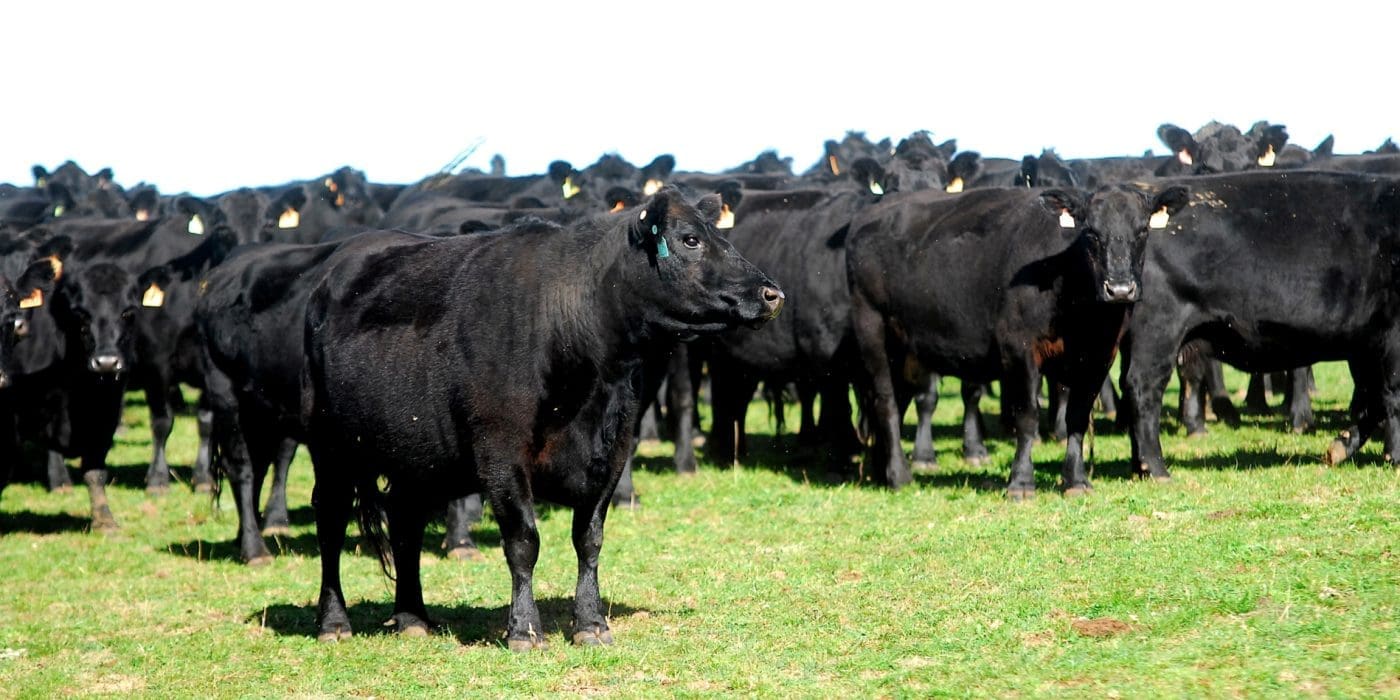Delivered as part of the recent Autumn 2020 Angus Connect R&D Update, Angus Australia’s Breed Development & Extension Manager Andrew Byrne took a look at one of the more topical subjects, ‘Are Angus cows getting too big?’ and overviews the development of research breeding values to better describe the composition of mature Angus females.

THE mature weight of Angus cows has increased genetically by 40kg in the last 20 years, with the current genetic trend showing an increase of 2.5kg per year. Is it anything to be concerned about?
“The Angus breed has made considerable genetic improvement over the last 20 years through the adoption of breeding and genetic technologies, which is a testament to breeders in Australia,” Angus Australia’s breed development & extension manager Andrew Byrne told the recent Angus Connect R&D Update.
Most of this genetic improvement had been achieved through an increase in the growth of Angus cattle without compromising calving ease, decreased age at turn off, and a focus on improved carcase attributes such as marbling, he said.
Differences of opinion
A consequence of the increase in growth has been an associated increase in the weight of Angus breeding females. Recent survey work completed by Angus Australia shows that there were vast differences in opinion on whether the increase in mature weight is a cause for concern, reflecting differences in individual enterprises and breeding philosophies.
“On the positive side, the increase observed in mature weight has resulted in an increase in the returns from surplus females – however the increased weight comes at the cost of an increase in feed requirements” Mr Byrne said.
There is also a question as to whether there has been any change observed in the body composition of mature Angus cows, and for this reason, Angus Australia released research breeding values for mature body condition and mature height in 2019.
While further research is continuing the fine-tune the breeding values, in conjunction with the existing Mature Cow Weight EBV, the research breeding values enable consideration to be given to mature cow weight and body composition, alongside other traits of importance, when making selection decisions.
“The challenge for the Angus breed is to breed the modern curve-bender, where we continue to put extra growth into Angus cattle, but hold mature weight where it is,” Mr Byrne said.
This would only be possible if there was an increase in the submission of weights for mature cows into the TransTasman Angus Cattle Evaluation, he said. There are currently between 12,000 and 15,000 mature weight submitted, which represents about 20pc of the Angus seedstock females in Australia.
“If there is not an increase in the level of recording, mature weight will continue to increase as selection for increased growth to 400 and 600 days of age continues,” Mr Byrne said.
However, if measurements were recorded at 400 and 600 days of age through to maturity, animals that do not follow the standard growth pattern could be identified and selected for use within breeding programs, he said.
“All Angus seedstock breeders are encouraged to collect weights, body condition scores and hip height measurement on their mature females when collecting the 200-day weights for their calves each year. Interested breeders can also collect these measurements at joining, and pre-calving to assist future research in understanding changes that may occur in weight and body condition throughout the annual production cycle.”
Click the link below to view the full presentation delivered at the Autumn 2020 Angus Connect R&D update
- Information on collection measurements on mature cows is available from the Angus Education Centre, click here.
- Click this link to read an earlier Beef Central on Angus cow weights

Sandy, happy to assist in providing proven, powerful genetics that you will be able to finish according to you requirements.
They have been too big, they are too big and going the wrong direction…………IF……….efficiency and profitability are important.
http://profitableranching.com
I would think the increase in MCW in Angus cows is more than 40 kgs in the last 20 years, Angus cows are now pretty big.
The drive to match the growth of Euro cattle has led to this outcome. USA data suggests that Angus cow mature weight is greater than that of Black Simmental cows. A big turn around which is due to the considerable effort the American Simmental Association has put into the genetic potential of these cattle, they deliver more early growth from exceptional calving ease while lowering MCW.
The development of International Genetic Solutions, a collaboration of more than 12 breed societies (Simmental has lead this initiative) in the USA is providing nearly 20 million individual multi breed animals in this evaluation which together with Genomic technology is leading the world in genetic evaluation.
Bigger cows/heifers have lower conception rates, particularly in tough times as well as the need for more feed, it is all connected.
There has been a continuing concern here for now some years. We have had a program of pure verified Angus now for over ten years with a continuing decline in our ability to adequately finish cattle to an acceptable standard . By this l mean purchasing same and finishing on grain to meet customers eating quality assurance. Have spoken to many seed stock breeders over recent years to highlight this only to find their exploits towards more of the same. They are now undoing their long held advantage as we and others are already exploring alternatives. Angus are simply getting progressively harder to finish.